Paul Jenkins was an American abstract expressionist painter.

Wangechi Mutu is a Kenyan-born American visual artist, known primarily for her painting, sculpture, film, and performance work. Born in Kenya, she has lived and established her career in New York City for more than twenty years. Mutu's work has directed the female body as subject through collage painting, immersive installation, and live and video performance while exploring questions of self-image, gender constructs, cultural trauma, and environmental destruction and notions of beauty and power.
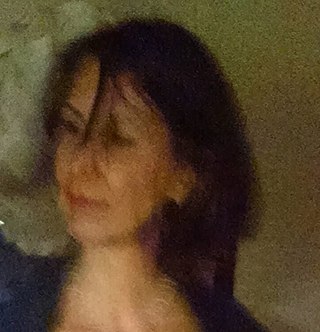
Janet Biggs is an American artist, known for her work in video, photography and performance art. Biggs lives and works in New York City.
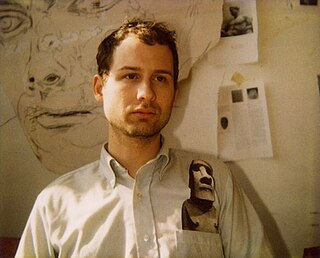
Ryan Johnson is a visual artist based in Brooklyn, New York. His sculptures are "made from a variety of materials, among them wood, medical casting tape and sheet metal," and they have been described as having "strange spatial compressions, surreal displacements and quasi-Futurist illusions of movement."
Zane Lewis is an American visual artist based in Brooklyn, New York. His abstract paintings and sculptures reference color field painting, pointillism, phenomenology, and minimalism. And have been stylistically referred to as 'psychedelic minimalism'.
Saint Clair Cemin is a postmodern sculptor.
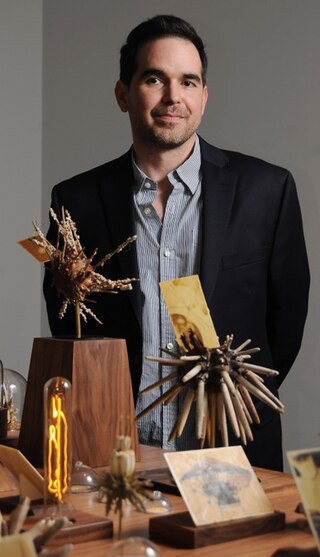
Dario Robleto is an American transdisciplinary artist, researcher, writer, teacher and “citizen-scientist”. His research-driven practice results in intricately handcrafted objects that reflect his exploration of music, popular culture, science, war, and American history.

Arturo Herrera is a Venezuelan-born (1959), Berlin-based visual artist known for wide-ranging work that is rooted in the practice of collage. His colorful, often rhythmic art intertwines bits of pop iconography, gestural marks and nonrepresentational shapes using pictorial strategies of fragmentation, repetition, effacement and dislocation. The resulting imagery often balances between abstraction and figuration, detached from inherent narratives yet vaguely familiar. Critics suggest that this ambiguity engages memory, fantasy and a viewer's unconscious private interpretive schemes, evoking a multiplicity of references and readings. In 2020, Art in America writer Ara H. Merjian described Herrera's practice—which includes works on paper, paintings, reliefs, sculpture, public art and books—as "chameleonic as [it] is consistent," one that "breathes life into modernist collage, exploring the tensions between exactitude and spontaneity, placement and displacement."
George Earl Ortman was an American painter, printmaker, constructionist and sculptor. His work has been referred to as Neo-Dada, pop art, minimalism and hard-edge painting. His constructions, built with a variety of materials and objects, deal with the exploration off visual language derived from geometry—geometry as symbol and sign.

Stephen Greene was an American artist known for his abstract paintings and in the 1940s his social realist figure paintings.
Laylah Ali (born 1968) is a contemporary visual artist known for paintings in which ambiguous race relations are depicted with a graphic clarity and cartoon strip format.
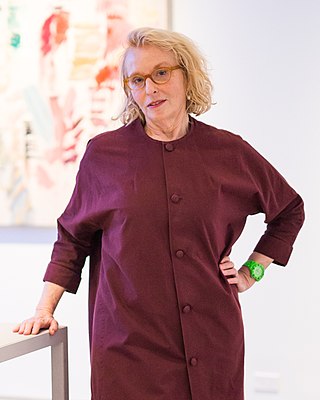
Arlene Shechet is an American artist. She lives and works in New York City, Woodstock, and Kingston, New York.

Jennie C. Jones is an African-American artist living and working in Brooklyn, New York. Her work has been described, by Ken Johnson, as evoking minimalism, and paying tribute to the cross-pollination of different genres of music, especially jazz. As an artist, she connects most of her work between art and sound. Such connections are made with multiple mediums, from paintings to sculptures and paper to audio collages. In 2012, Jones was the recipient of the Joyce Alexander Wien Prize, one of the biggest awards given to an individual artist in the United States. The prize honors one African-American artist who has proven their commitment to innovation and creativity, with an award of 50,000 dollars. In December 2015 a 10-year survey of Jones's work, titled Compilation, opened at the Contemporary Arts Museum in Houston, Texas.
Sage Sohier is an American photographer and educator.
Tony Feher was an American sculptor. He was born in Albuquerque, New Mexico, and was raised in Corpus Christi, Texas. He received a Bachelor of Arts from the University of Texas at Austin, in 1978. He began exhibiting fine art in 1980 and had his first solo show at Wooster Gardens in 1994, and shortly thereafter was reviewed favorably by Roberta Smith in a short article titled "Three Artists Who Favor Chaos:" "Tony Feher's chaos is actually rather well-organized and instinctively archival and devotional." Since then, notable solo exhibitions of his work have taken place at Diverseworks in Houston; Sikkema Jenkins & Co., Pace Gallery, and D’Amelio Terras in New York; ACME in Los Angeles; Anthony Meier Fine Arts in San Francisco; and The Suburban in Oak Park, Illinois.
Brenda Goodman is an artist and painter currently living and working in Pine Hill, New York. Her artistic practice includes paintings, works on paper, and sculptures.

Anna Sew Hoy is an American sculptor based in Los Angeles, California. She works primarily in clay, a medium she has been drawn to since high school. Sew Hoy’s works are abstract and blend found everyday items with uniquely crafted ceramic pieces to evoke a familiar yet uncanny response. Noting the performative aspect of working with clay, Sew Hoy has often engaged other artists to activate her sculptural installations through performance. Art critic Christopher Miles has called the artist’s work “utterly contemporary… in both its go-lightly cannibalism with regard to boomer-era agendas and preoccupations—from Funk art and folk craft to essentialist symbolism—and its openness to the cultural forms and detritus of its moment as legitimate grist for serious artmaking.”
Jennifer Packer is a contemporary American painter and educator based in New York City. Packer's subject matter includes political portraits, interior scenes, and still life featuring contemporary Black American experiences. She paints portraits of contemporaries, funerary flower arrangements, and other subjects through close observation. Primarily working in oil paint, her style uses loose, improvisational brush strokes, and a limited color palette.
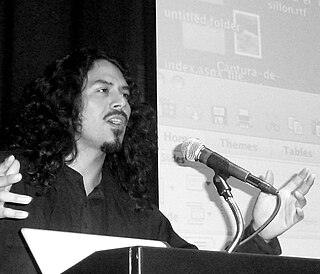
William Cordova is a contemporary cultural practitioner and interdisciplinary artist currently residing between Lima, Peru; North Miami Beach, Florida; and New York.
William Page Reimann is an American sculptor and arts educator, known for his large plexiglas and steel sculptures, stonework, metalwork, and figurative graphite and ink drawings. He was among the handful of "pioneering" sculptors who brought plastic materials to the New York art scene in the 1960s. In stone, his notable public works include the Radnor Gateway Project for the Blue Route in Radnor, PA, and the twenty-four granite panel series of the Piers Park Commons Pavilion in East Boston, MA.













